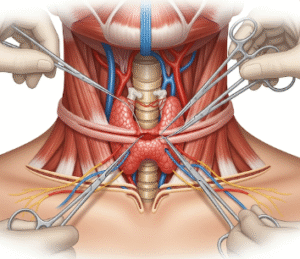Dyspnea in Korea
Overview
Dyspnea, commonly known as shortness of breath, is a distressing sensation of not being able to breathe comfortably. It can occur suddenly (acute dyspnea) or develop gradually (chronic dyspnea), and it is often associated with underlying heart, lung, or systemic conditions.
In Korea, dyspnea is one of the most common symptoms evaluated in emergency departments and specialized clinics, particularly in cardiology, pulmonology, and critical care. With Korea’s advanced diagnostic imaging, pulmonary function testing, and respiratory support technologies, patients receive rapid evaluation and targeted treatment to address both acute and chronic causes of dyspnea.
What is Dyspnea?
Dyspnea is not a disease but a symptom of an underlying health problem. It may occur during physical activity, at rest, or while lying down (orthopnea). Depending on its duration and cause, it can be classified as:
- Acute dyspnea – sudden onset, often due to asthma attack, pulmonary embolism, or heart failure.
- Chronic dyspnea – persistent shortness of breath, often linked to COPD, interstitial lung disease, or chronic heart conditions.
Symptoms
- Shortness of breath or difficulty breathing
- Rapid or shallow breathing
- Feeling of suffocation or tightness in the chest
- Wheezing or noisy breathing
- Fatigue and dizziness
- Anxiety or panic due to breathing difficulty
Causes
Dyspnea has multiple causes, broadly categorized into:
- Respiratory conditions: asthma, COPD, pneumonia, pulmonary embolism, interstitial lung disease, lung cancer.
- Cardiac conditions: heart failure, arrhythmias, coronary artery disease.
- Hematologic causes: anemia.
- Metabolic causes: acidosis, sepsis.
- Neuromuscular causes: myasthenia gravis, ALS.
- Psychological causes: panic disorder, anxiety.
Risk Factors
- Smoking and air pollution exposure
- Chronic respiratory or cardiovascular disease
- Obesity and lack of physical fitness
- Occupational hazards (dust, chemicals)
- Family history of heart or lung conditions
Complications
- Severe oxygen deprivation leading to respiratory failure
- Worsening of underlying heart or lung disease
- Reduced quality of life and physical activity
- Anxiety and depression
- Emergency hospitalizations and ICU admissions
Prevention
- Avoid smoking and secondhand smoke
- Regular health checkups for early detection of heart and lung conditions
- Vaccinations (flu, pneumonia, COVID-19) to prevent respiratory infections
- Weight management and regular exercise
- Use of protective gear in workplaces with hazardous air exposure
Treatment Options in Korea
Diagnosis
- Chest X-ray, CT scan, MRI for structural lung and heart evaluation
- Pulmonary function tests (PFTs) to assess breathing capacity
- Electrocardiogram (ECG) & Echocardiogram for heart function
- Blood tests for anemia, infection, or metabolic causes
- Pulse oximetry & arterial blood gases for oxygen levels
Medical Treatments
- Oxygen therapy for hypoxemia
- Bronchodilators and inhaled corticosteroids for asthma and COPD
- Diuretics and heart medications for heart failure-related dyspnea
- Antibiotics/antivirals for infections causing breathing issues
- Anticoagulants for pulmonary embolism
Surgical or Advanced Therapies
- Lung surgery or transplantation for severe lung disease
- Cardiac interventions (angioplasty, bypass) for heart-related dyspnea
- Mechanical ventilation or ECMO (extracorporeal membrane oxygenation) in critical cases
Rehabilitation and Support
- Pulmonary rehabilitation programs (widely available in Korea)
- Breathing exercises and physiotherapy
- Psychological support for anxiety-related dyspnea
- Nutritional counseling for weight management













